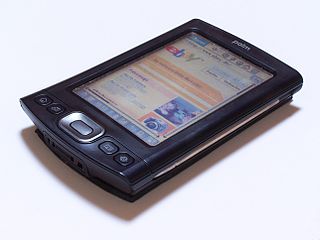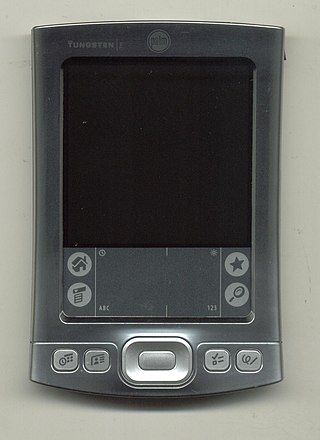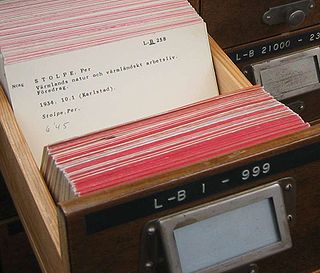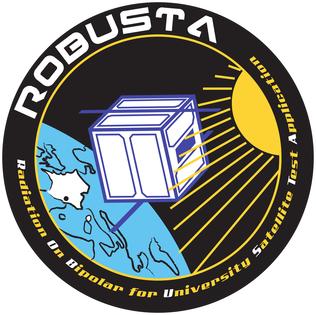
A personal digital assistant (PDA) is a multi-purpose mobile device which functions as a personal information manager. PDAs have been mostly displaced by the widespread adoption of highly capable smartphones, in particular those based on iOS and Android, and thus saw a rapid decline in use after 2007.
Time management is the process of planning and exercising conscious control of time spent on specific activities—especially to increase effectiveness, efficiency, and productivity.

A smart card (SC), chip card, or integrated circuit card, is a card used to control access to a resource. It is typically a plastic credit card-sized card with an embedded integrated circuit (IC) chip. Many smart cards include a pattern of metal contacts to electrically connect to the internal chip. Others are contactless, and some are both. Smart cards can provide personal identification, authentication, data storage, and application processing. Applications include identification, financial, public transit, computer security, schools, and healthcare. Smart cards may provide strong security authentication for single sign-on (SSO) within organizations. Numerous nations have deployed smart cards throughout their populations.

Palm is a line of personal digital assistants (PDAs) and mobile phones developed by California-based Palm, Inc., originally called Palm Computing, Inc. Palm devices are often remembered as "the first wildly popular handheld computers," responsible for ushering in the smartphone era.

A memory card is an electronic data storage device used for storing digital information, typically using flash memory. These are commonly used in digital portable electronic devices, such as Digital cameras as well as in many early games consoles such as the Nintendo Wii. They allow adding memory to such devices using a card in a socket instead of protruding USB flash drives.

A personal organizer, also known as a datebook, date log, daybook, day planner, personal analog assistant, book planner, year planner, or agenda, is a portable book or binder designed for personal management. It typically includes sections such as a diary, calendar, address book, blank paper, checklists, and additional useful information like maps and telephone codes. It is related to the separate desktop stationery items that have one or more of the same functions, such as appointment calendars, rolodexes, notebooks, and almanacs.

An address book or a name and address book is a book, or a database used for storing entries, called contacts. Each contact entry usually consists of a few standard fields. Most such systems store the details in alphabetical order of people's names, although in paper-based address books entries can easily end up out of order as the owner inserts details of more individuals or as people move. Many address books use small ring binders that allow adding, removing, and shuffling of pages to make room.

The Tungsten series was Palm, Inc.'s line of business-class Palm OS-based PDAs.

Getting Things Done (GTD) is a personal productivity system developed by David Allen and published in a book of the same name. GTD is described as a time management system. Allen states "there is an inverse relationship between things on your mind and those things getting done".

An index card consists of card stock cut to a standard size, used for recording and storing small amounts of discrete data. A collection of such cards either serves as, or aids the creation of, an index for expedited lookup of information. This system is said to have been invented by Carl Linnaeus, around 1760.

An electronic organizer is a small calculator-sized computer, often with an built-in diary application and other functions such as an address book and calendar, replacing paper-based personal organizers. Typically, it has a small alphanumeric keypad and an LCD screen of one, two, or three lines.
Apple II system clocks, also known as real-time clocks, were devices in the early years of microcomputing. A clock/calendar did not become standard in the Apple II line of computers until 1986 with the introduction of the Apple IIGS. Although many productivity programs as well as the ProDOS operating system implemented time and date functions, users would have to manually enter this information every time they turned the computer on. Power users often had their Apple II's peripheral slots completely filled with expansion cards, so third party vendors came up with alternative approaches with products like the Serial Pro and No-Slot Clock.
Palm Desktop is a personal information manager computer program for Microsoft Windows or Mac OS/Mac OS X, and can be used alone or in combination with a Palm OS personal digital assistant.

A tickler file or 43 Folders System is a collection of date-labeled file folders organized in a way that allows time-sensitive documents to be filed according to the future date on which each document needs action. Documents within the folders of a tickler file can be to-do lists, pending bills, unpaid invoices, travel tickets, hotel reservations, meeting information, birthday reminders, coupons, claim tickets, call-back notes, follow-up reminders, maintenance reminders, or any other papers that require future action. Each day, the folder having the current date is retrieved from the tickler file so that any documents within it may be acted on. Essentially, a tickler file provides a way to send a reminder to oneself in the future—"tickling" one's memory.

Merlin Dean Mann III is an American writer, blogger, and podcaster.

Avantix Mobile ("AVB") is a portable railway ticket issuing system used across the British railway network from 2001 to 2017.

ROBUSTA is a nano-satellite scientific experiment developed by the University of Montpellier students as part of a Centre National d'Études Spatiales (CNES) call for student projects in the field of orbital systems.

A bullet journal is a method of personal organization developed by digital product designer Ryder Carroll.

A Zettelkasten or card file consists of small items of information stored on Zettels, paper slips or cards, that may be linked to each other through subject headings or other metadata such as numbers and tags. It has often been used as a system of note-taking and personal knowledge management for research, study, and writing.
















